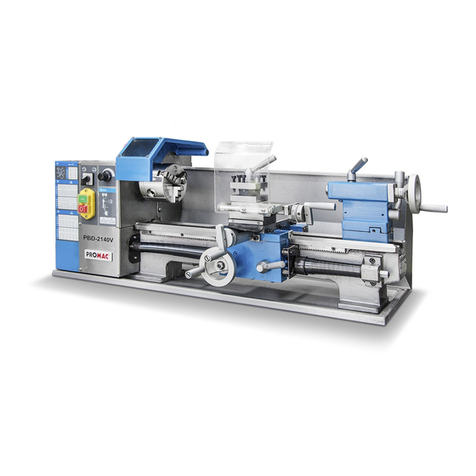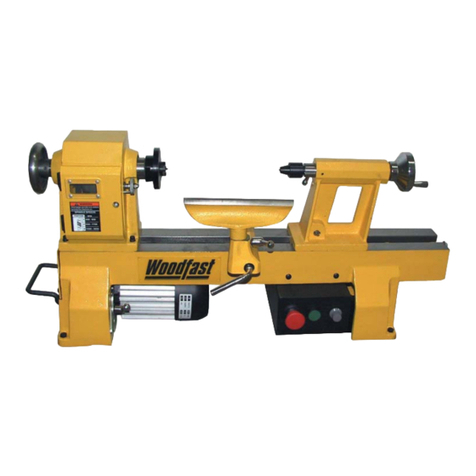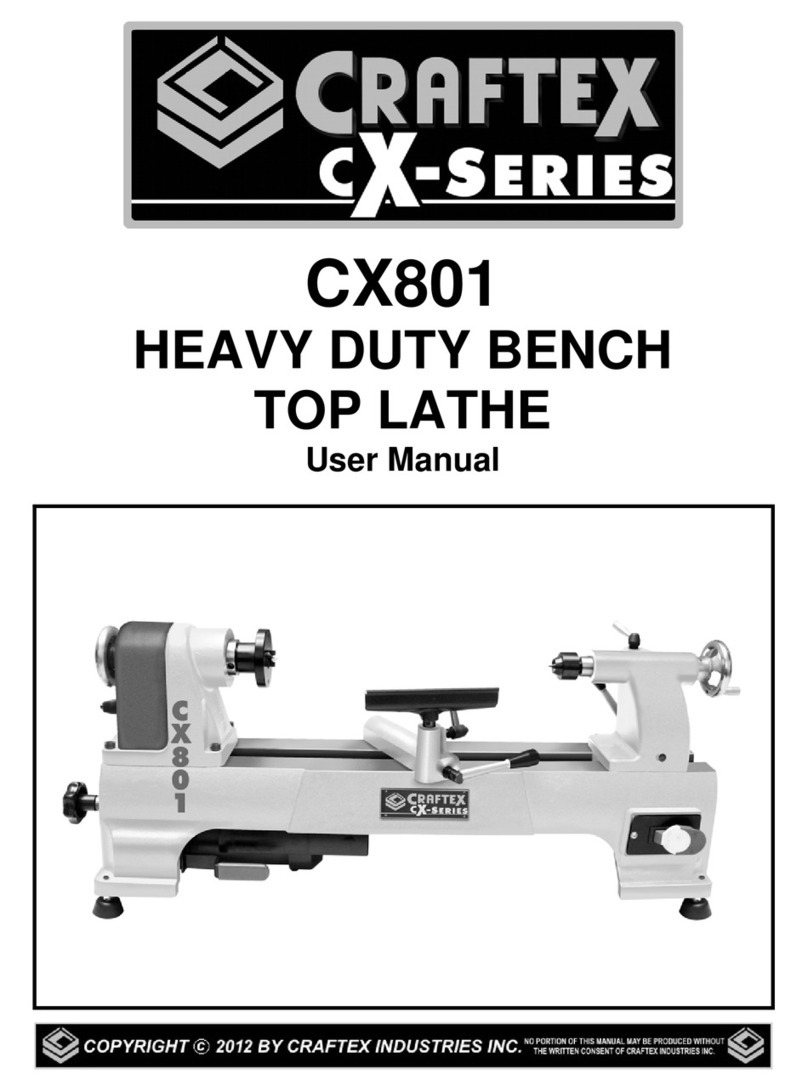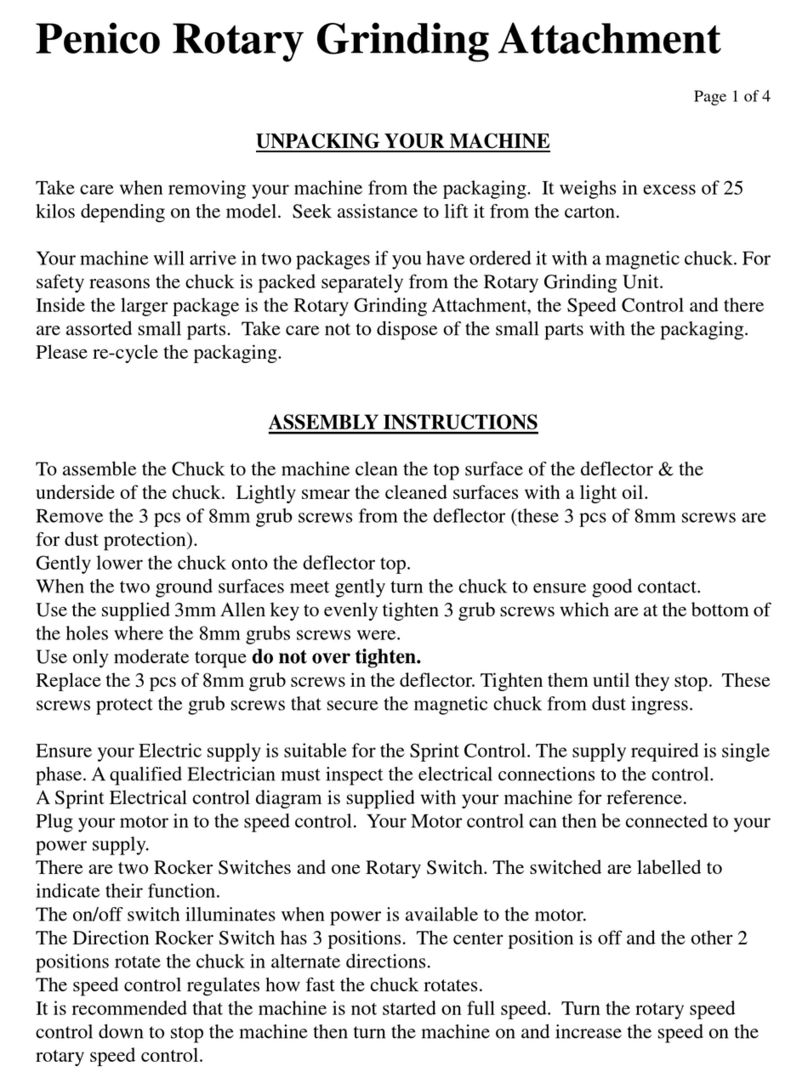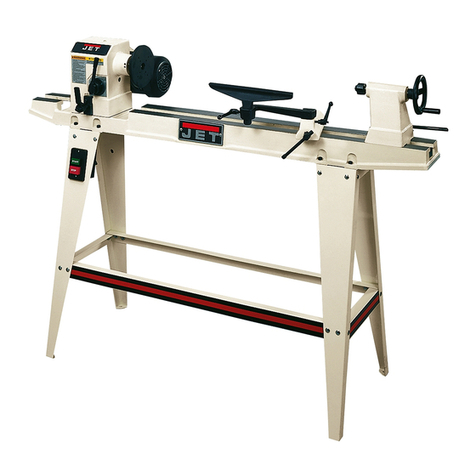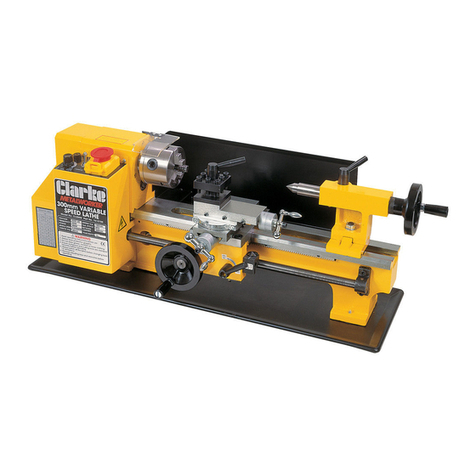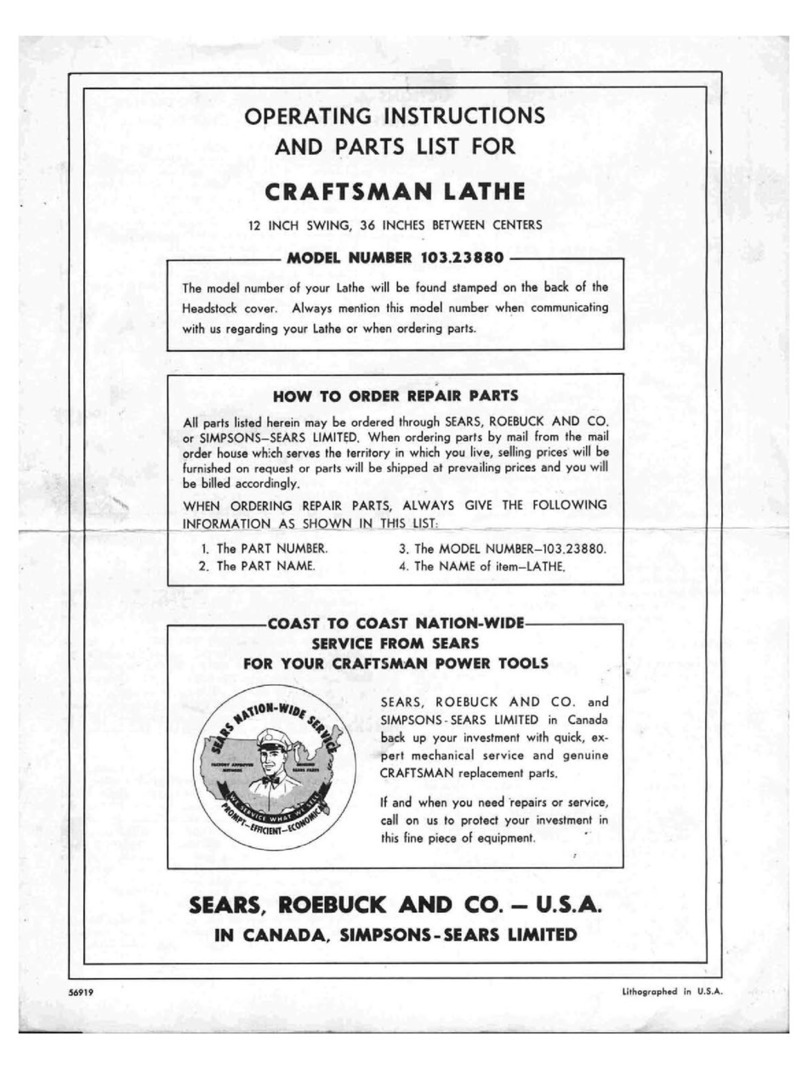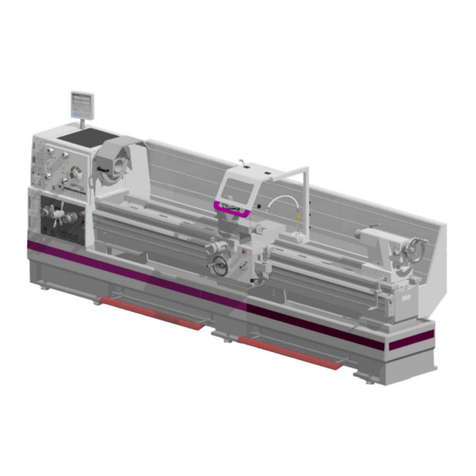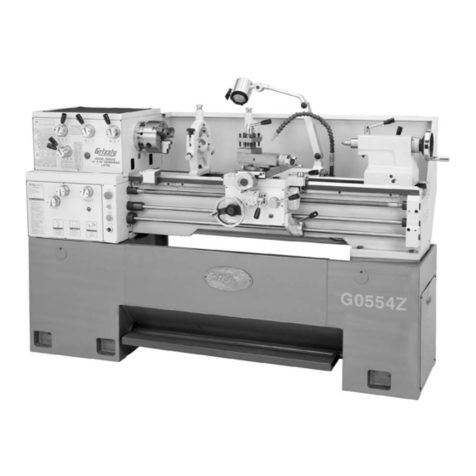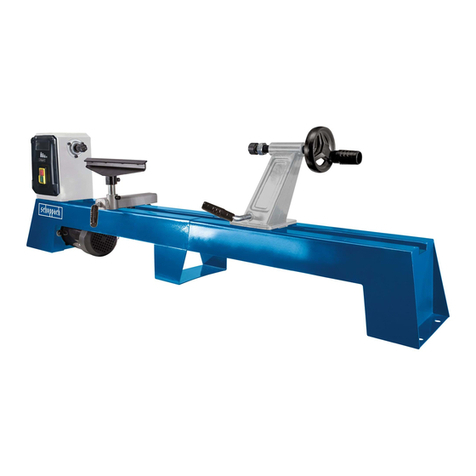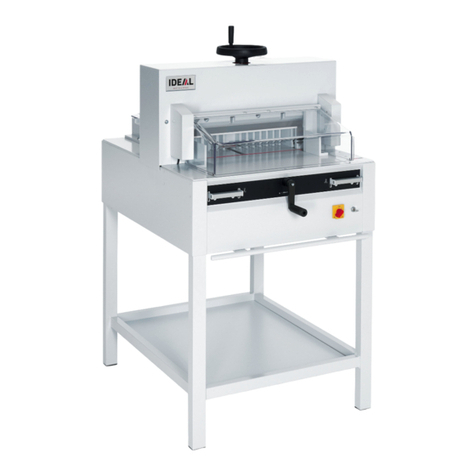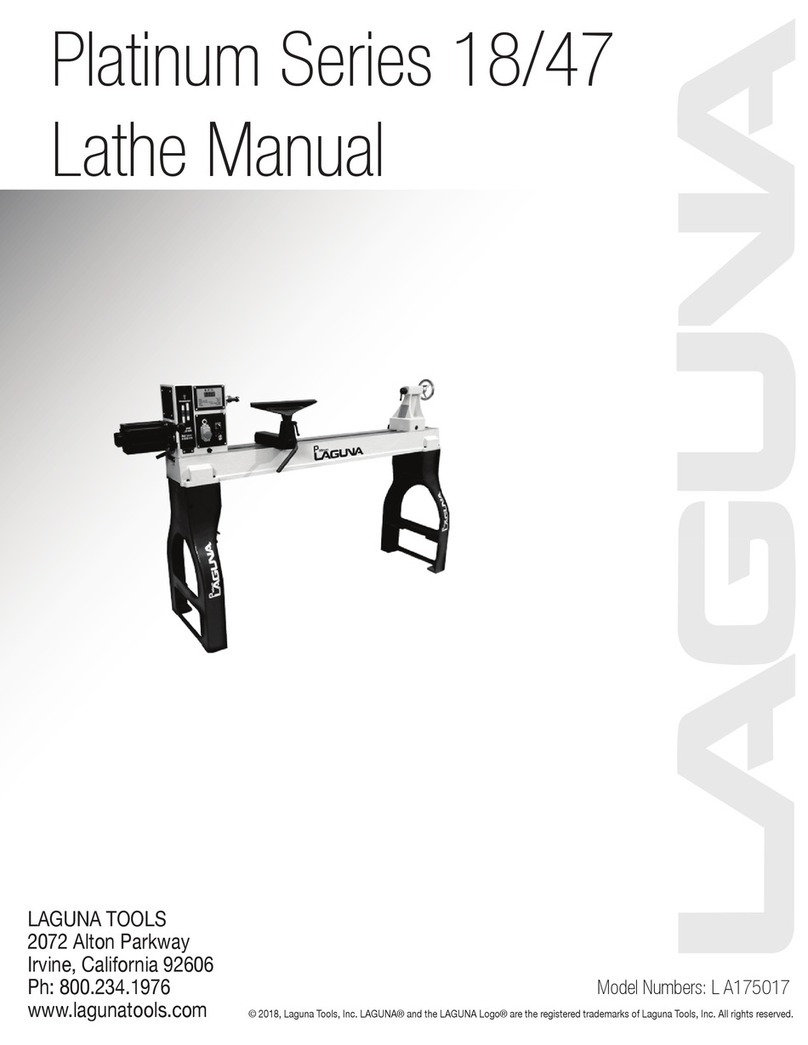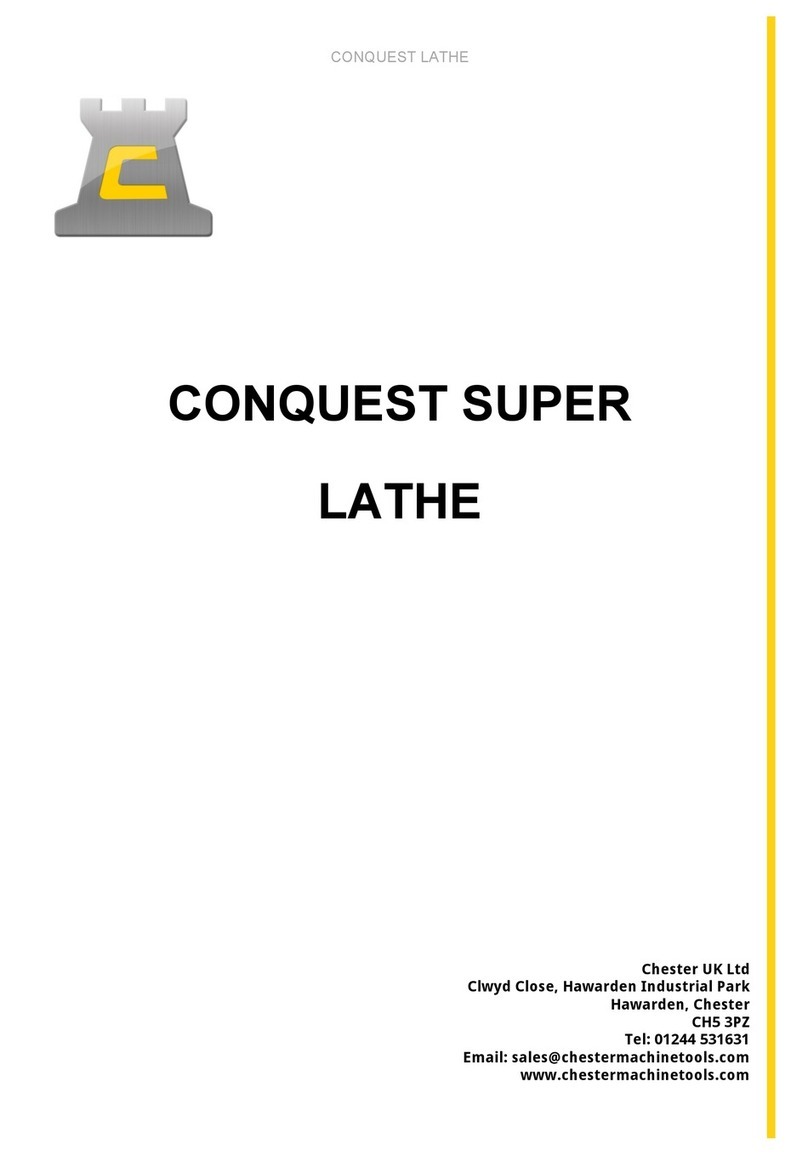STALEX C0632D User manual

EC- DECLARATION OF CONFORMITY
We, DKSH Hong Kong Limited, 23/F Tower A, Southmark, 11 Yip Hing Street, Wong Chuk Hang,
Hong Kong,
declare under our sole responsibility, that the machinery
Factory Product name: C0632Dx750
Function: Metal working and finishing machine
Model: ST – 1330T
Type: Metal Working Lathe
Article number: 77.930.93034.12
Year of production: 2011
is in conformity with all the relevant provisions of Directives:
2006/42/ EC (Machinery directive),
2006/95/ EC (Low voltage directive),
2004/108/ EC (EMC),
2002/95/ EC (RoHS directive),
2002/96/ EC (WEEE directive)
and tested in accordance with below standards:
EN 349:2008-9
EN 11202:2010
EN 12100-1:2004
EN 12100-2:2004
EN 12840:2001
EN 13850:2008
EN 13857:2008
EN 23125:2010
EN 55014-1:2006
EN 55014-2:1997+A1
EN 61000-3-2:2006
EN 61000-3-3:1995+A1+A2
EN 60204-1/A1:2009
Hong Kong, 31.03.2011 Managing Director
Authorized to compile the technical file
DKSH Hong Kong Limited
23/F Tower A, Southmark, 11 Yip Hing Street,
Wong Chuk Hang, Hong Kong
www.dksh.com

OPERATION MANUAL
& PARTS LIST
MODEL: C0632D/C0636D

Operation Manual
1
CONTENTS
Preface………………………………………………………………………………………2
1.Safty Rules for Lathes……………………………………………………………………3
2.Mchine Specification….…… ………………………………………..……………………6
3.Constructional Indication………………………………………………………………7
4.Unpacking and Installation………………………………………………………………8
4.1 Unpacking………………………………………………………………..……………8
4.2 Cleaning…………………………………………………………………..……………8
4.3 Installation………………………………………………………………..……………8
5.Lubrication………………………………………………………………………………10
5.1 Headstock……………………………………………………………………………10
5.2 Gearbox………………………………………………………………………………10
5.3 Apron…………………………………………………………………………………10
5.4 Change gears………………………………………………………………………10
5.5 Others parts…………………………….…………………………………………10
6.Test Running…………………………………………………………………………11
6.1 Operation symbols………………………………………………………..…………11
6.2 Spindle speed control……………………………………………………..…………12
7.Thread and Feed Selection……………………………………………………………13
7.1 Thread and feed selection…………………………………………………………13
7.2 Feed and thread tables……………………………………………………………14
7.3 Thread cutting operation……………………………………………………………17
8.Electric Circuit Control………………………………………………………………19
9.Chucks and Chuck Mounting…………………………………………………………21
10.Maintenance and Servicing…………………………………………………………22
10.1 Lathe alignment……………………………………………………………………22
10.2 Saddle strip…………………………………………………………………………22
10.3 Cross slide…………………………………………………………………………22
10.4 Compound rest……………………………………………………………………23
10.5 Cross slide nut……………………………………………………………………23
10.6 Tail stock bed clamp………………………………………………………………23
11.Bed Assembly………………………………………………………………………24
12.Headstock Assembly………………………………………………………………29
13.Gearbox Control……………………………………………………………………36
14.Change Gear…………………………….………………………………………41
15.Apron…………………………………………………………………………………43
16.Cross Slide & Compound……………………………………………………………46
17.Tailstock Assembly……………………………………………………………………50
18.Steady & Follow Rest…………………………………………………………………53
19.Coolant System…………………………………………………………………………55

Operation Manual
2
Preface
For an efficient and appropriate way of utilization, also for extending the
machine’s life, all the operators are requested to carefully read the instruction of this
Manual before start to operate.
Most of the operators think, according to their own experience, they can handle
the machine appropriately and hopeful to neglect what so important items in this
booklet. Anyhow, we may say, as per previous experiencing, that many of the
breakdowns are resulted from ignoring the instructions of the Manual. Although you
have our one-year’s warranty for the damage caused by the defect of the machine,
either in material or functional, we will not take any responsibility for any damages
arise out of improper operation.
In the mean time, besides specification, operator should also thoroughly and
deeply acknowledge the character, function and maintenance of this machine before
starting.
Generally, in addition to the description stated in coming chapter, you are
requested to notice the following points:
1. Never install the machine in the place where the sun shines directly or where
the radiation of heat can reach for avoiding from affecting the accuracy of the
machine.
2. Use only the recommended lubrication oil.
3. Clean the machine every time when finish working, or a cover will be a plus to
prevent the dust.
4. Try to get rid of chips or dusts especially in the grooves of the machine. Keep it
as clean as possible or it may be scratched.
5. Whenever the grooves of the machine damaged by falling in extra articles,
don’t ever try to move Apron. It needs to be repaired to resume its work.
Hope this Operation Manual can be of great assistance and provide you more
convenience when operating. The content of this Manual is the best solution derived
from our long terms of manufacturing and operating experience. We wish to service
you always with a policy of upgrading quality and a conviction in pursuit of perfection.

Operation Manual
3
1. Safety Rules for Lathes
Safety is a combination of operator common sense and alertness at all times
when lathe is being used. Study these safety rules and general safety rules before
operating and retain for future use.
(1) Do not grip a component with grease or oil on it.
Grip all components firmly.
Do not attempt to hold components that are too awkward or too difficult to hold.
Do not hold components that are too heavy for the machine.
Know how to hold components properly when lifting.
(2) Be sure to clean oil or grease from hand tools, levers and handles.
Be sure there is enough texture on the surface of the hand tool or lever handle
for proper safe hand contact.
(3) Grip hand tools and lever handles firmly.
Always choose the proper hand tool and appropriate grip position on the lever
handle.
Do not use hand tools or lever handles in an awkward position.
Do not apply excessive force.
(4) Always use the recommended gripping position to grasp hand tools and lever
handles.
(5) Do not allow turning or hand tools to be caught in the chuck or other holding
device.
(6) Do not use broken, chipped or defective tools.
(7) Be sure work piece cannot move in chuck or other holding device.
(8) Beware of irregular shaped work pieces.
(9) Beware of large burrs on work pieces.
(10) Always select the correct tool for the job.
(11) Do not run the machine unattended.
(12) Do not use tools without handles.
(13) Always support the work piece as necessary using chucks, steadies and
centers.
(14) Correctly locate tool in socket heads and screw slots.
(15) Beware of obstructions that prevent complete tightening of screws-ensure
screw is tight.

Operation Manual
4
(16) Do not rush work.
(17) Never substitute the wrong size tools if the correct sized tool is not available
or cannot be located in the shop.
(18) Do not move guards while lathe is under power.
(19) Do not place hand or body in path of moving objects.
Beware of moving lathe parts that can fall.
Beware of where you are moving your hand or body in relationship to the lathe.
Beware of holding a tool or other parts inserted in or attached at the chuck or
work piece.
Beware of hands or other parts of the body that may in position to be hit by a
chuck or work piece.
(20) Beware of accidentally moving levers or turning the power on.
(21) Know the function of each and every control.
(22) Never place hand on chuck or workpiece to stop rotation of the spindle.
(23) Make sure power has been turned off when lathe id unused for sometime.
(24) Allow chuck to stop before operating it.
(25) Always check chuck area for chuck keys and loose items.
(26) Never start spindle with chuck key in the chuck.
(27) Do not allow distractions to interfere with lathe operations.
Do not operate lather whilst talking.
(28) Beware of lathe dangers when attending to other aspects of lathe operation.
E.g. whilst operating tailstock.
(29) Beware of loose clothing near the rotating parts of the lathe.
(30) Beware of loose hair near the rotating parts of the lathe.
(31) Beware of performing another operating while in close proximity to rotating
parts on the lathe.
(32) Always attend to filing and deburring operations.
Always pay attention to file or deburring tools close to the chuck , files and
deburring tools may catch on chuck.
(33) Be sure lathe is in neutral position when placing gauges on components
gripped in the chuck.
(34) Be sure motor is not running when using gauges on the machine.
(35) Always wear protection before operating the lathe.

Operation Manual
5
Always wear the correct protection for even a short time when operating the
lathe.
Never remove protection for even a short time when operating the lathe.
Wear protection devices correctly.
Know the correct way to wear protective devices.
(36) Beware of material flying from the lathes.
(37) Keep protective guards at the point of operation.
Know how to set or attach protective guards properly.
Never use the wrong protective guard.
(38) (a) When the chuck and workpiece are in motion never reach over, under or
around a workpiece to make an adjustment.
(b) Never reach over, under or around a workpiece to retrieve anything.
(c) Beware of there you leave your tools during set up.
(d) Never reach over, under or around workpiece to move hand tool/lathe to
another position.
(e) Never reach over, under or around the workpiece to tighten a lathe part.
(f) Never reach over, under or around workpiece to remove swarf.
(39) Know the proper procedure for applying loads.
Never apply force form an awkward position.
(40) Never mount a workpiece too large for the lathe.
(41) Never mount a workpiece too large for the operator to handle.
(42) Use the equipment necessary for handling workpiece.
(43) Never apply undue force on the accessory or control lever.
(44) Secure all workpiece.
(45) Secure all jaws, nuts, bolts and locks.
(46) Always use the excessive force in polishing, filling and deburring.
(47) Never take cuts beyond lathe’s capability.
(48) Never use excessive force in polishing, filling and deburring.
(49) Always use the proper hand tool to remover swarf. Never hurry to remove
swarf bewares of swarf wrapped around the chuck or workpiece.
(50) Never change gears by moving them with your hands.
(51) Beware of tools/lathe parts falling on controls.

Operation Manual
6
2. Machine Specification
Bench lathe are especially suitable for machining, tool tooms and repairing working
shops to machine shafts, spindle, sleeves, and disc work piece of middle or small
types. They can also be used to cut imperial, diametric and module thread, and with
compact construction and reasonable composition, they can cut very well. They are
easy and reliable to operate, convenient to repair high in efficiency, and low noise.
Technical specification
Swing over bed……………………………………….…………………330/358mm
Swing over support…………………………….…..……………………198/223mm
Swing over gap…………………………………….………….…………476/502mm
Center height………………………………………………….………166/179mm
Distance between centers……………………….……..………750mm or 1000mm
Bed width………………………….………………….…………………………187mm
Bed height………………………………………………………………………290mm
Motor output…………………………………….………………………………1.5kw
Voltage…………………………………….…………………………220V or 380V
Spindle bore…………………………………….……………………………….38mm
Cam lock system……………………………………………………….………D1-4
Spindle speed…………………………………………………………70-2000r.p.m
Spindle taper……...…………………………………………………………MT No.5
Cross slide travel………………………………………………………………170mm
Compound slide travel………………………………………………………..95mm
Leadscrew diameter…………………………………………………………..22mm
Feed rod diameter……………………………………………………………..19mm
Cutting tool (Max. section)…………………………….…………..16mm×16mm
Imperial thread………………………………………………………4-112T.P.I(42)
Metric thread……………………………………………………0.1-7mm(44)
Module thread………………………………………………………...0.1-1.75MP(34)
Diametral thread………………………………………………………..16-112DP(25)
Longitudinal feed(Metric)…………………………………...…0.046-3.249mm/rev
Longitudinal feed(Imperial)………………………..………0.00168"-0.1175"/rev
Cross-feed(Metric)…………………...……………..……..0.010-0.7033mm/rev
Cross-feed(Imperial)………………....…………....…..…0.00046"-0.03231"/rev
Tailstock quill diameter & taper………………………………………….32mm/No.3
Weights (750mm or 1000mm)…………………520/620kg or 550/655kg(NW/GW)
Packing Size(750mm or 1000mm)………………168×76×153 or 193×76×153cm

Operation Manual
7
3. Constructional Indication
1. Headstock
2. Speed selector for H or L
3. Eclectic control box
4. Speed selector lever
5. Spindle
6. Splash guard
7. Lead screw
8. Feed rod
9. Longitudinal traverse hand wheel
10. Carrage
11. Tool post
12. Cross traverse handle
13. Feed axis selector
14. Compound rest
15. Compound rest traverse handle
16. Thread cutting engagement lever
17. Spindle control lever
18. Quill clamp lever
19. Tailstock clamp lever
20. Tailstock
21. Tailstock Set-Over screw
22. Quill traverse hand wheel
23. Support body
24. Chip tray
25. Right mounting feet
26. Foot-Brake
27. Front plate
28. Cabinet stand
29. Left mounting feet
30. Gear box
31. Selector handle for “1~8” position
32. Selector handle for “RST” position
33. Selector handle for “ABC” position
34. Selector handle for “WXY” position
35. Gear box cover
36. Feed direction selector

Operation Manual
8
4. Unpacking and Installation
4.1. Unpacking
Unload the machine with a tackle, using clamping plates and eyebolts. Keep the
machine in balance by moving the tailstock and the bed slide to the right. Avoid using
sling chains as they could damage to feed rod and leadscrew. Lift the lathe carefully and
place it softly into the floor or workbench.
4.2. Cleaning
Before taking the machine into operation, using kerosene (paraffin) or white spirit to
remove the anti-corrosive coating or grease from all slideways and gear train. Don’t use
lacquer thinner or other caustic solvents. Oil all bright machine surfaces immediately after
cleaning. Use heavy oil or grease on the change gears.
4.3. Installation
Place the lathe on a solid foundation. A concrete floor is the best base for the
machine. (If necessary, use an under frame operational). Make sure there is sufficient
area around the lathe for easy work and maintenance. Use a precision level on the
bedways to make further adjustment for level condition, then tighten the foundation bolts
evenly and finally recheck for level condition.

Operation Manual
9
Distance between
centers (A) B C D E
750mm 1618 1050 1538 1808
1000mm 1868 1300 1788 2058

Operation Manual
10
5. Lubrication
Before putting the lathe into operation, make the following lubrication check.
5.1. Headstock
The bearing of the headstock turns in an oil bath. Ensure that the oil level reaches
three quarters of the oil gauge glass.
For exchanging the oil, remove the end cover and the change gears with swing frame.
Drain off the oil by removing the drain plug on the bottom of the headstock. To fill, take off
the headstock cover.
Check the oil level regularly. The first oil change should be made after 3 month, then
change it once a year.
5.2. Gearbox
Remove the end cover to expose the filling plug. Through it the Shell is filled to the oil
level in the oil gauge glass regularly. The first oil change should be made after three
months, then change it once a year.
5.3. Apron
The oil bath is filled with Shell through the filling plug on the right side of the apron.
Check the oil level in the oil gauge glass on the front regular. The first oil change should
be made after three months, then change it once a year.
For exchanging the oil, drain away oil by taking off the drain plug on the bottom of the
apron.
5.4. Change gears
Lubricate the change gears with thick machine oil or grease once a month.
5.5. Other parts
There are other lubricating points on the input shaft bracket of the gearbox, the
handwheel on the apron, the longitudinal and cross slide, the thread dial indicator, the
tailstock and the bracket, use the grease gun to put a few drops of oil from time to time.
Lubricate the apron worm and worm gear, half nut and leadscrew twice a month. Apply a
light oil film to the bed way and all other bright parts like the tailstock quill, feed rod etc.
once a day.

Operation Manual
11
6. Test Running
6.1. Operation symbols
Red Green Power
Green: on
Red: off
Red Green Coolant
Green: on
Red: off
Half nut opened
Half nut closed
Metric thread
Imperial thread
Module thread
Diametral thread
Right-hand thread and longitudinal
feed toward the headstock side
Left-hand thread and longitudinal feed
reverse the headstock side
Oil inlet (hole)
Longitudinal feed
engaged (upward).
Both Longitudinal feed
disengaged (central).
Cross feed engaged
(downward)
Don’t change speed
while is running
Electrical control
(Danger)
JOG
Pilot Lamp
STOP

Operation Manual
12
6.2. Spindle speed control
(A). Identification before operation
Ensure that lubrication has been carried out as described before.
When the main spindle is rotating. The gearbox and feed axis of the bedsides are put
into operation. The forward/reverse switch should be on neutral. The feed axis selector
and feed/thread selector handle are in disengaged position. Under these circumstances,
both the longitudinal traverse handwheel and cross traverse handle can be operated by
hand.
(B). Main spindle rotation
The main spindle rotation is selected by forward/reverse switch.
(C). Main spindle speed
The speed of the main spindle is selecting by (high/low) speed selector (2) and 4
steps speed selector (4). For both high and low speed, there are 4 different positions. For
correct speed, please refer to the speed chart. When selector (2) is on “high”, we can get
the four speeds, according to the graph.
Never change the speed before the motor has stopped completely!
Adjusting the speed can be assisted by turn the main spindle by hand.
(D). Running-in
Running in should be done at lowest possible spindle speed. Let the machine to run
at lowest speed for about twenty minutes, and then check for irregularities. If everything
seems in order, gradually increase the speed.
(E). Operation
Use only high peripheral speed type chucks.
The maximum spindle speed for chuck plate of 255mm diameter should not be more
than 1255r.p.m. When thread cutting or auto feeding are not in use, the feed/thread
selector should be in neutral position, so as to ensure disengagement of the leadscrew
and the feed rod. To avoid unnecessary wear, the thread dial indicator should be out of
mesh with the leadscrew.

Operation Manual
13
7. Thread and Feed Selection
7.1. Thread and feed selection
All feed and threads are given on the feed thread tables, fitted on the front and inside
of the gear box cover (35), by setting the four feed selector handles (31),(32),(33),(34).
(A). Hand feed operation
The movement of carriage is made by the longitudinal traverse handwheel (9), cross
sliding by the cross traverse handle(12), and compound rest by the compound rest
traverse handle (15), the carriage is anchored by turning the carriage lock screw in
clockwise direction.
(B). Replacement of change gears
Take off the gear box cover(35)firstly, and then loosen clamping shaft and the
clamping screw of the swing frame to exchange the transmission shaft gear with another
gear, it is necessary for suitable back lash to intermediate the gears in both cases.
Change gear’s assemble style have 3 kind: F, G, H. F, G assemble style be used for
feed and metric thread, imperial thread cutting. H assemble style be used for MP thread,
DP thread cutting. F assemble style be used on machine for leave factory.
For any special threads not covered by the thread table, our engineering department
is available to specify the most convenient change gearing required.
(C). Automatic feed operation and change
When the feed axis selector (13) on the apron is pulled out and operated upward, we
can obtain a longitudinal feed and cross feed can be obtained by pushing the selector in
and operating it downward. (Make sure the thread cutting engagement lever (16) at
disengaged position before operating the feed axis selector.)
Feed direction can be changed by turning feed direction selector . It have 24 kinds of
feed speeds each in longitudinal and cross feed can be obtained by means of the feed
selector handles.

Operation Manual
14
7.2. Feed and thread tables
(A) .Feed table
(a) Longitudinal and cross feed table for Imperial lathe
(b) Longitudinal and cross feed table for Metric lathe

Operation Manual
15
(B). Thread tables
(a) Thread tables for Imperial leadscrew

Operation Manual
16
(b) Thread tables for Metric leadscrew

Operation Manual
17
7.3. Thread cutting operation
In order to obtain the desired thread, all correct change gears must be installed in
strict accordance with the chart, failure to do so will give incorrect threads.
Rotate the leadscrew by operating the feed/thread selector to any position and be
sure the feed selector handle is engaged. Operate downward the thread cutting
engagement lever (16), and it will be engaged with the leadscrew to obtain the
longitudinal travel of carriage, namely, the thread cutting feed. Make sure the feed axis
selector is disengaged (at neutral position) before operating the thread cutting
engagement lever (16) since there is an interlock mechanism between the auto feeding
and thread cutting engagement.
Direction of thread cutting can be chosen by turning the feed directing selector (36) at
the headstock. There are 42 Nos. of thread pitches each in Imperial, 44 Nos. of Metric
pitches,34 Nos. of module thread , 5 Nos. of diametral thread those which can be
obtained by turning the feed selector handles .
(A).Thread dial indicator
The thread dial indicator is installed on the right hand side of the apron; the indicator
is used for thread cutting to engage with the leadscrew.
For minimum wear the thread dial indicator should be disengaged by swing the pinion
out of mesh with the
leadscrew when not in
use.
Imperial threads on
Imperial leadscrew
machines or Metric
threads on Metric
leadscrew machine.
For these threads it
is recommended that
the thread dial indicator
be used this allows the
half nut of leadscrew to
be engaged at the end
of each thread cutting pass, provided that they are re-engaged in accordance with the
indicator table mounted on the left hand side of the apron.

Operation Manual
18
(1) Imperial leadscrew machines (Imperial threads only)
The table shows:
T.P.I: threads per inch to be cut.
Scale: the dial numbers at which the half nut of leadscrew may be engaged.
(2) Metric leadscrew machines (Metric thread only)
The table shows:
IN column 1: millimeter pitches to be cut.
28T, 30T, 32T: The number of teeth in “pitch-off gear” arranged to mesh with the
leadscrew (this being selected from the stack, stored on the bottom of the dial spindle)
Dial graduation:
The dial numbers at
which the half nut
may be engaged
under No. of teeth of
pick-off gear.
(3) Imperial threads on Metric leadscrew machines or Metric threads on Imperial lead
screw machines
For these threads the half nut is kept engaged throughout the cutting of any one
thread. This involves reversing the whole drive by means of the spindle control lever (17)
at each end of the thread cutting pass whilst at the same time relieving or increasing the
cut as required. (Threads ‘A’ may also be by this method)
This manual suits for next models
1
Table of contents

